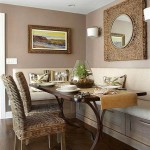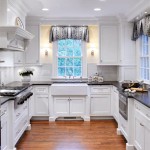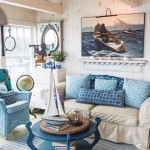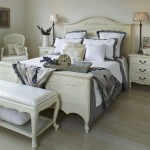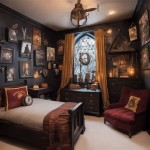Victorian House Decor Ideas: Emulating a Timeless Aesthetic
Victorian house decor, named after the reign of Queen Victoria (1837-1901), represents a period of profound social and industrial change that significantly influenced interior design. The Victorian era embraced opulence, intricate detailing, and a sense of comfort that reflected newfound wealth and a desire for domestic embellishment. Recreating this aesthetic in a modern home requires a careful understanding of its key characteristics, including color palettes, furniture styles, textiles, and decorative accessories.
The objective of Victorian interior design was to create a space that was both visually stimulating and deeply comforting. This was achieved through a combination of rich colors, layered textures, and an abundance of ornamentation. The Victorian home was a showcase of personal taste and social standing, filled with objects collected and displayed with pride.
Color Palettes: Embracing Richness and Depth
Victorian color palettes were far from the muted, minimalist schemes often favored today. Instead, they leaned towards deep, saturated hues designed to create a sense of warmth and grandeur. Common colors included deep reds, greens, blues, and browns. These were often used in combination, creating a layered and harmonious effect.
Dark reds, such as burgundy and crimson, were popular choices for dining rooms and libraries, creating an atmosphere of richness and refinement. These colors were often complemented by dark wood furniture and heavily patterned textiles. Dark greens, including emerald and forest green, were frequently used in parlors and living rooms, evoking a sense of nature and tranquility.
Blues, ranging from deep navy to softer shades of teal and sapphire, were utilized in bedrooms and sitting rooms, providing a sense of calm and sophistication. These blues were often paired with lighter accent colors, such as cream or gold, to prevent the space from feeling too heavy. Browns, including chocolate and mahogany, were essential for wood finishes and furniture, grounding the color scheme and adding a touch of masculinity.
Beyond the primary colors, accent colors played a vital role in Victorian design. Gold, silver, and bronze were frequently used in detailing, such as picture frames, light fixtures, and decorative accessories, adding a touch of luxury and glamour. Additionally, softer shades of cream, ivory, and pale yellow were used to balance the darker colors and create visual interest.
Wallpapers were a significant element of Victorian decor and often featured intricate patterns in rich color combinations. These wallpapers typically incorporated floral motifs, geometric designs, or damask patterns. The use of contrasting colors within the wallpaper pattern added depth and visual appeal to the room.
Furniture Styles: A Blend of Comfort and Ornamentation
Victorian furniture was characterized by its ornate detailing, heavy construction, and emphasis on comfort. Pieces were often crafted from dark woods, such as mahogany, walnut, and rosewood, and featured elaborate carvings, turned legs, and plush upholstery. The overall effect was one of luxury and stability.
Sofas and armchairs were generously sized and deeply cushioned, designed for relaxation and socializing. Upholstery fabrics included velvet, brocade, and damask, often in rich colors and intricate patterns. These pieces were frequently adorned with decorative pillows and throws, adding layers of texture and visual interest.
Tables were another essential element of Victorian furniture. Dining tables were typically large and imposing, capable of seating numerous guests. Side tables and coffee tables were smaller and more decorative, often featuring marble tops and intricate carvings. These tables provided surfaces for displaying decorative objects and serving refreshments.
Bedroom furniture included large, ornate beds with elaborate headboards and footboards. Dressers and wardrobes were also generously sized and featured ample storage space. These pieces were often adorned with decorative hardware and intricate carvings, reflecting the Victorian emphasis on detail.
In addition to the main furniture pieces, Victorian homes often included smaller, more specialized items, such as writing desks, rocking chairs, and fainting couches. These pieces added personality and functionality to the space, catering to the specific needs and interests of the residents.
The placement of furniture in a Victorian room was carefully considered to create a sense of balance and harmony. Pieces were often arranged in symmetrical patterns, with larger items placed against the walls and smaller items grouped around focal points. The overall effect was one of order and elegance.
Textiles and Decorative Accessories: Layering for Visual Richness
Textiles played a crucial role in Victorian decor, adding layers of texture, color, and pattern to the space. Curtains, carpets, and upholstery fabrics were all carefully chosen to complement the overall aesthetic. The goal was to create a visually rich and inviting environment.
Curtains were typically layered, with sheer inner curtains providing privacy and heavier outer curtains blocking out light. These curtains were often made from luxurious fabrics, such as velvet, silk, or brocade, and adorned with tassels, fringes, and tiebacks. The layering of curtains added depth and dimension to the windows, creating a sense of warmth and opulence.
Carpets were another essential element of Victorian textiles. Oriental rugs, with their intricate patterns and rich colors, were a popular choice. These rugs added warmth and texture to the floors, defining the space and providing a sense of luxury. Alternatively, patterned carpets in floral or geometric designs were also common.
Upholstery fabrics were chosen to complement the furniture styles and color palettes. Velvet, brocade, and damask were popular choices, often in rich colors and intricate patterns. These fabrics added a sense of luxury and comfort to the furniture, making it more inviting and appealing.
Decorative accessories were used extensively in Victorian homes to add personality and visual interest. These accessories included paintings, sculptures, porcelain figurines, and other objects collected and displayed with pride. The goal was to create a space that reflected the personal tastes and interests of the residents.
Paintings were often displayed in ornate frames and hung in groupings on the walls. Landscapes, portraits, and still life paintings were all popular choices. Sculptures, both large and small, were placed on pedestals or tables, adding a sense of grandeur and sophistication to the space.
Porcelain figurines, often depicting animals, people, or mythical creatures, were displayed in cabinets or on shelves. These figurines added a touch of whimsy and charm to the room. Other decorative accessories, such as clocks, lamps, and vases, were chosen to complement the overall aesthetic and add functionality to the space.
The arrangement of decorative accessories was carefully considered to create a sense of balance and harmony. Objects were often grouped together in visually appealing arrangements, with taller items placed in the back and smaller items in the front. The goal was to create a space that was both visually stimulating and deeply comforting.
Lighting fixtures played a significant role in Victorian homes, providing both illumination and decoration. Chandeliers, sconces, and table lamps were all common, often featuring ornate designs and intricate detailing. These lighting fixtures added a touch of glamour and sophistication to the space, creating a warm and inviting atmosphere.
Mirrors were another important element of Victorian decor, used to reflect light and create the illusion of space. Large mirrors were often hung on the walls, while smaller mirrors were placed on tables or dressers. These mirrors added depth and dimension to the room, making it feel larger and more open.
The overall effect of Victorian textiles and decorative accessories was one of visual richness and layered complexity. The goal was to create a space that was both beautiful and functional, reflecting the personal tastes and interests of the residents.

Feast For The Senses 25 Vivacious Victorian Living Room Ideas Decoist
:max_bytes(150000):strip_icc()/ScreenShot2021-08-18at3.46.48PM-0881e8625a754c1a94a611f3e74a6226.png?strip=all)
27 Modern Victorian Decorating Ideas That Aren T Stuffy

Victorian Living Room Ideas For Your Home Designcafe

Feast For The Senses 25 Vivacious Victorian Living Room Ideas Decoist

Victorian Living Room Ideas Soho Blog

18 Modern Victorian Living Room Ideas House

9 Best Victorian Interior Design Ideas To Beautify Your Home Foyr

7 Victorian Decor Ideas To Keep Your Home Fresh Leader Floors Blog

Colourful Remodel Of Victorian Semi Living Room Dark Rooms Grey

How To Improve Flow And Modernise A Victorian House
Related Posts

